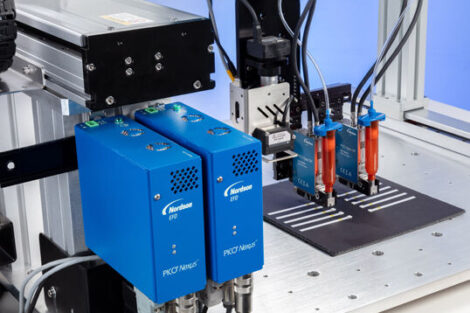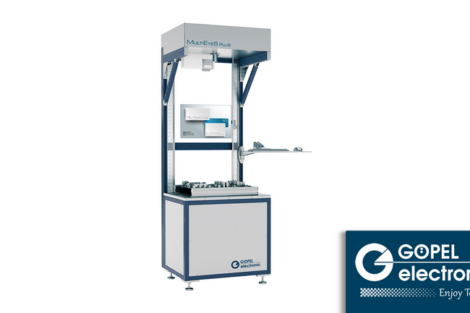While the high-volume production of electronics shifts more and more eastward, European electronics manufacturers are focusing increasingly on small to medium-volume jobs, a segment in which they operate with exceptional productivity. Critical for this success are optimized processes which in turn require flexible employees as well as flexible equipment. Siemens EA provides the necessary technological basis with its modular Siplace placement machines. In an interview with EPP EUROPE, Dipl.-Ing. Holger Liebetruth, Head of Global Product Marketing for Siplace placement machines, explains the particularities of the European market for electronics manufacturers and what customers need to pay special attention to when selecting their placement equipment.
Everywhere you read and hear that the high-volume production of electronics is shifting towards Asia. Do you agree, and what does this mean for European electronics manufacturers?
This statement is essentially correct. But Eastern Europe also has become home to many companies who are globally competitive with high-volume production. And don’t forget that there is not only demand for high-volume articles. The European market has developed many submarkets which require particularly flexible manufacturing with small and medium-sized volumes. This is the direction in which many mid-sized, local electronics manufacturers are looking these days. They have specialized, becoming highly flexible, offering additional development or logistics services. And they are doing all of this – and this is particularly important – while keeping a firm handle on their costs and their quality.
What special demands are being placed on electronics manufacturers in connection with this development?
Small to medium volumes require frequent product changeovers on the lines – often several times a day. As a result, the flexibility of man and machines becomes critically important. According to my observations, most employees in these companies are willing to go along in this direction. They enjoy being productive and want to take full advantage of the capabilities of their production lines. Of course, the machines themselves play a major role. They must meet many different criteria in order to provide the best possible productivity.
What are these criteria?
Unlike with high-volume manufacturing, maximum machine performance is not at the top of the list. If you have frequent product changeovers, keeping non-productive times low is equally important. After all, what good is the fastest machine if it doesn’t run half the time because the setup changeovers are taking so long?
Is this why it is so important to do as many preparatory tasks as possible offline?
Correct. Offline programming, offline setup and offline optimization are playing an increasingly important role. It is important though to keep an eye on the overall concept which should be based on a modular machine platform that can be adapted to a wide range of requirements. In addition, the line and production solutions should be complemented by software, support and consulting services.
Let’s take a closer look at the modular machine platform. What are the major criteria it should meet?
In short: performance, availability and output quality. Of course there are many factors that must interact properly. For example, to achieve high output quality you must have a robust and highly precise machine structure including, for example, linear drives. In addition, high-quality machines control the placement process automatically. Let’s look at an example: When the nozzle picks up a component, its presence should be confirmed instantly. In our Siplace machines, this job is performed by a vacuum sensor. The advantage: if a pickup error occurs, for example because of a component flaw, the machine senses right away that the component is missing and attempts another pickup with no wasted travel time. Other machines which operate without this vacuum check notice only after a long trip to the stationary component camera that the component is missing and can start the next pickup process only after another long trip back. This takes time and reduces performance.
While the placement heads continue to go through their cycle, the first component is already being checked by the digital camera. As it moves towards the circuit board, the system corrects the component’s angle, if necessary, and finally places it on the board with individually adjustable force. Siplace machines take a picture of each component with different lighting levels which are optimized for each particular package shape. This means that we don’t need to make compromises like other machine manufacturers who have to process multiple components simultaneously with the same light settings. Our machines reflect this advantage with their robust and reliable inspection results.
How can you shorten the time required for setup changeovers?
As I said earlier, the magic word is “offline”. I am talking about both hardware and software. The component feeders are set up offline and can be replaced on the machine within only a few seconds. With our machines, the placement program is created and optimized offline. This means that we are able to determine the best placement sequence within a few minutes after programming. By the way: With Siplace software, electronics manufacturers can also reduce the number of setup changeovers significantly by producing several different products with the same setup.
How does that work?
Our engineers developed a special program named SiCluster which is based on our Siplace Pro programming system. With SiCluster you can combine multiple jobs assigned to a line. SiCluster groups them and can, for example, group ten individual jobs into a single product family while making sure that only products are being grouped that fit together with respect to their component spectrum and don’t stand in each other’s way in terms of placement performance.
Once the product group has been defined, the machine operator can use Siplace Setup Center offline to capture all the materials and provide the foundation for subsequent setup controls and traceability.
Does this require any mechanical changes on the machine?
Not with our machines. All it takes is a few mouse clicks, and the desired dual or single transport options are selected. But you are right, many machines from other manufacturers would require manual adjustments.
What’s the deal with dual and single transport?
Electronics manufacturers can use this feature to improve their flexibility, because the circuit board sizes often vary significantly. Boards up to 50 mm by 450 mm can be handled with the single transport. Since we repeatedly receive requests for boards up to 610 mm long, we offer the so-called long-board option which lets manufacturers process such huge PCBs as well.
Normal board sizes from 50 mm by 50 mm to 450 mm x 250 mm can be handled with our dual transport where we differentiate between synchronous and asynchronous modes – a very important feature for electronics manufacturers. In asynchronous mode, one board is being processed while the next board enters the placement area. That way, the transport time does not reduce the placement time. In synchronous mode, two boards are moved into the placement area side-by-side and treated like one single large board. This mode is particularly advantageous if the user wants to process the top and bottom simultaneously, and both sides have highly different placement contents.
Why?
With traditional production methods, the top is processed first. After the line has been reset, the bottom is populated. With the synchronous dual transport, however, the manufacturer can do this on a single line with perfect placement synchronization for the tops and bottoms. This eliminates the logistical effort required for storing the boards between runs and performing setup changeovers. It also reduces the number of components in the manufacturing process compared with other systems.
Let’s return to the issue of software. Can you give us another example how software can affect the productivity of the SMT production process?
Making an impact directly at the machine is very important. With Siplace machines, operators have access to advanced features at the machine itself which lets them adjust the placement program more quickly and directly. For example, the operator can re-teach fiducials and pickup positions directly at the station during introduction of new products.
And what about compatibility from one machine generation to the next?
This is very important, but not all machine makers provide it. We have a perfectly coordinated software package that is constantly being optimized and adapted to the latest requirements, but is always based on a compatible platform. If it makes sense for productivity reasons, you can easily combine different machine generations on the same line.
EPP Europe 401
Share:











